There are few feelings more overwhelming than studying for a huge exam. In front of you sits an entire semester’s worth of information, equations, and facts—a vast lake of knowledge—which you need to consolidate in your brain in a matter of days (hopefully weeks, but let’s be real).
Someone may as well have handed you a kettle and said: “There, now boil the water in that lake!”
You sit and stare at the stack of books and notes, almost dizzy with the sense of futility. How can you, one person with one kettle, boil all that water?
I’ll tell you how: one kettle at a time.
Like many things in life, studying a massive topic is best done when you can break it into multiple smaller steps. And flashcards are one of the most effective tools for helping you do exactly that.
A well-organized set of flashcards will not only help you learn faster (as proven by cognitive science research), it can also help you retain the information for longer. Moreover, using flashcards as a study method is much more convenient, making it so ridiculously easy for you to fall into study sessions, you’ll find yourself learning everywhere you go: at home, on the bus, in the bath, between lessons, or even on the can.
Brainscape has been researching the best ways to study with flashcards for over a decade. We've reviewed the academic literature in-depth, spoken with thousands of our own power users, and conducted countless focus groups to produce this complete guide to when and how to use flashcards to study any topic.
In this article we’ll cover how to study with flashcards. You'll master the best flashcard practices that the world's top students implement to perform better with the least amount of required study time:
- Should I use flashcards for my subject?
- Brainscape: flashcards reimagined and supercharged
- How to find premade cards
- How to create great flashcards
- How to study with flashcards
- Becoming a flashcard master
1. Should I use flashcards for my subject?
As the creators of the world's most effective flashcard app, it's of course tempting for us Brainscapers to promote flashcards as the solution to every learning problem. But before we dig into our full guide on how to use flashcards, the most important thing is to humbly recognize when is the best time to use them.
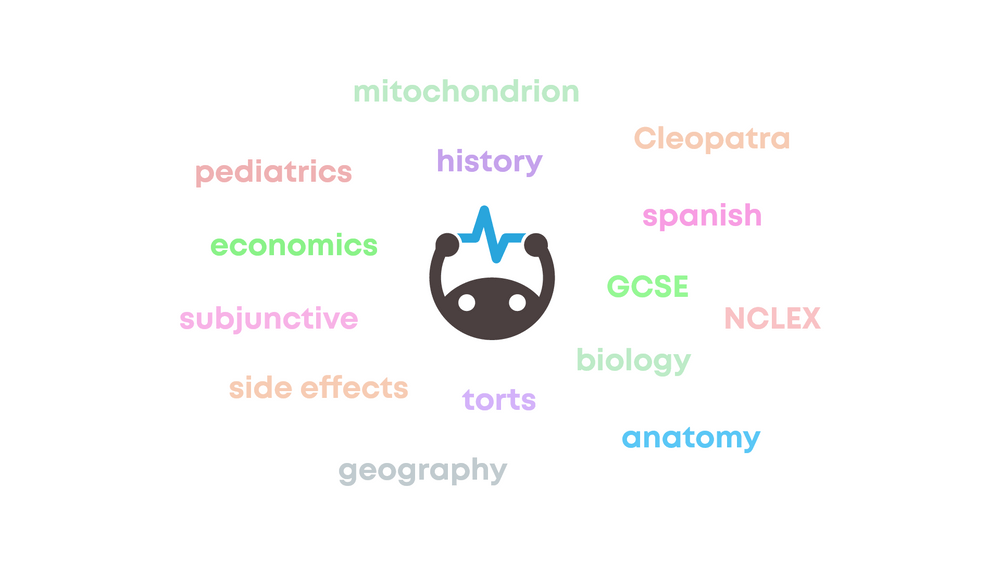
1.1. Which subjects are best for flashcards?
The first thing for us to note is that flashcards are NOT just some trivial learning technique reserved for kids or young students. While many of us may associate flashcards with multiplication practice or learning to tell time, the benefits of flashcards actually tend to be strongest for high-stakes subjects and more mature learners.
In other words, flashcards tend to work best for knowledge-intensive subjects that require a lot of factual memorization over a long period of time. For example:
- History
- Science
- Nursing
- Law
- Medicine
- Geography
- Literature
- Professional certifications
- Product & sales training
Each of these topics contain a multitude of individual facts, relationships, processes, names, diagrams, maps, characters, and/or terms that need to be individually internalized in order to achieve a meaningful level of mastery of the overall subject matter.
Almost any of those individual concepts can be broken down into a binary Question / Answer flashcard format that makes it super-convenient to review later, using active recall, spaced repetition, and interleaving practice. These are cognitive strategies that make learning super efficient and Brainscape leverages them all in our adaptive flashcard learning platform.
Active recall is the ability to remember a concept from scratch without assistance or prompting. We do this by showing students flashcards with only the question on them. They are then compelled to remember the answer without any hints or multiple-choice questions guiding them towards an answer. This deepens the cognitive pathways to that information.
Spaced repetition is showing a student the same information at just the right time intervals to help them remember it. If they don’t know the information at all, the flashcard will be repeated every three to four cards. If they know it well, it will be repeated far less frequently. This repeated exposure at just the right frequency is proven to help students retain information far more effectively.
Interleaving practice is a learning strategy that involves intentionally interweaving concepts across a subject or several subjects, rather than focusing on one specific task, concept, or subject at a time. This forces your brain to re-contextualize every concept it comes across, which builds much stronger connections to that information, deepening comprehension and memory.
Read: 'Interleaving practice makes perfect: "mix it up" to learn faster'
Flashcards can also be a great supplementary learning aid for foreign languages. There are numerous ways that vocabulary, common phrases, grammatical concepts, verb conjugations, and even audio pronunciations can be transformed into digital flashcards that can be incorporated into any overall language-learning curriculum.
[See our complete toolkit to learn any language more effectively]

1.2. Which subjects are not so great for flashcards?
Because flashcards assist with the learning of knowledge, they are not typically suited for more skill-intensive subjects, like:
- Advanced math
- Writing
- Philosophy
- Business
- Programming
These topics are probably better suited for more constructivist learning activities like writing, debating, and problem-solving practice.
Sure, you can make flashcards for some of the concepts in these subjects. For example: memorizing a trigonometry formulas, or the names and dogmas of the philosophers in a particular era. But at the end of the day, you really need to engage in debates, write papers, and practice complex problems in order to ace these subjects.
1.3. In which part of a lesson should flashcards be introduced?
If you want to use flashcards for your subject, when should you bust them out? Right away? Or when you're cramming the night before the test?
Most educators would argue that flashcards are typically not the best place to introduce a new topic for the first time—unless the flashcards were created using a very specific hybrid of instruction + review, such as in Brainscape's unique spaced repetition app for foreign language learning.
Rather, most standard flashcards are better-suited for review, and that review should ideally be started immediately after the initial exposure.
For example, let’s say you just read a textbook chapter (using our spaced repetition app for foreign language learning-know textbook-reading technique), and/or you just finished your class lecture (while following our guide to taking great class notes). The best time to make or start studying the flashcards for that topic is within 24 hours after said instruction to help consolidate your knowledge.
Hardly any students do this, of course.
They instead wait until a few days before the exam to cram. But if you begin your deliberate practice immediately after the initial instruction, you will end up saving A LOT of time having to re-learn those topics again later, and you will have a massive advantage over most other students.
[See also: How to study effectively with LESS total effort]
Regardless of how you use flashcards, just make sure you aren't over-relying on them or studying them in too much of a vacuum. Remember that flashcards are almost always better as a complement to a larger suite of study tactics and that for understanding larger complex sets of relationships, you may still be better served by concept maps or other similar activities.
2. Brainscape: flashcards reimagined and supercharged
Flashcards have a long history, dating back to at least 1805, when the Quakers used them to teach English writing. Ever since then, they’ve grown in popularity because they’re such an effective way to absorb knowledge.
Many people still make flashcards the exact same way as those early Quakers—by manually writing out questions and answers on dozens of paper cards, shuffling them as needed, and continually reviewing the deck until boredom or a vague sense of accomplishment sets in. This is still an effective way to learn, but can be vastly improved upon.
This is precisely what Brainscape has done with our adaptive web & mobile study platform. We have reimagined and supercharged the concept of flashcards. Brainscape flashcards are designed for serious learners: people who have high ambitions of smashing their exams, mastering foreign languages, and/or heading into their careers armed with the best possible education.
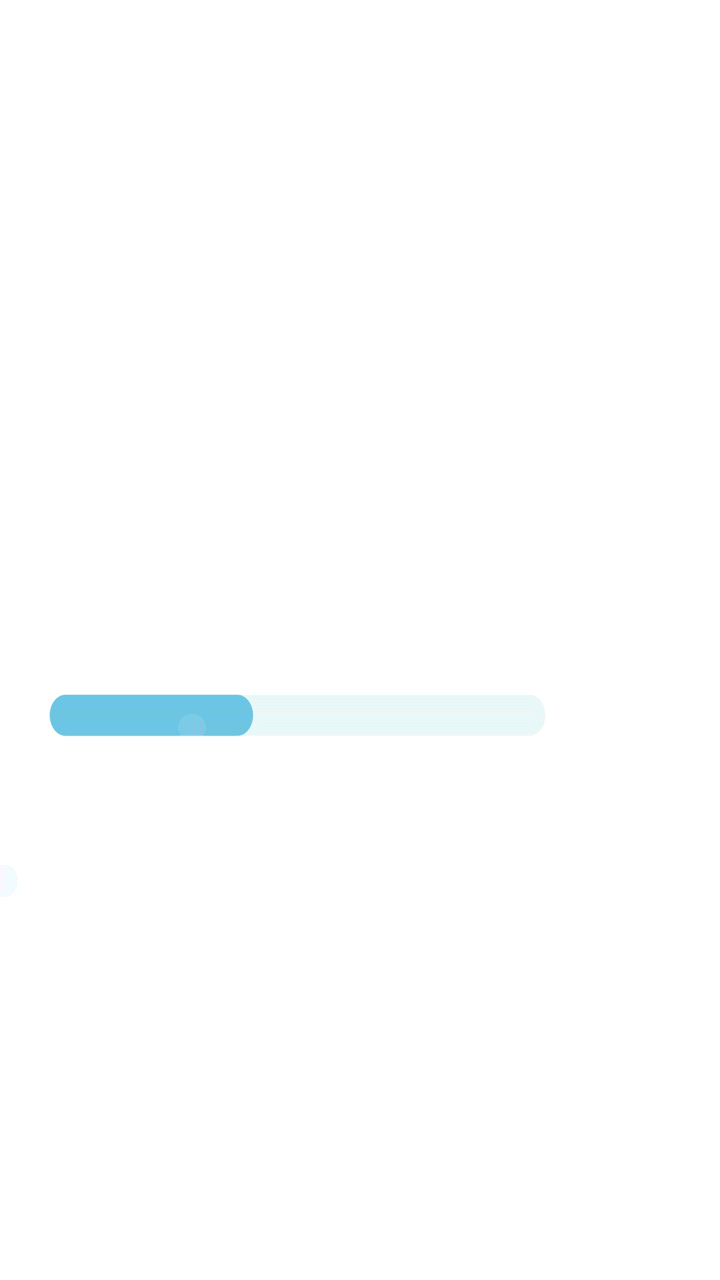
Our users are obsessed with optimizing their learning and making each minute of study count. They don’t have time for games, gimmicks, cartoons, or badges. People use Brainscape because they want to apply cognitive neuroscience concepts to learning faster and more efficiently; because they want the best way to use flashcards.
With Brainscape's online flashcards platform, you get (i) better content, (ii) better flashcard creation tools, and (iii) a more efficient study experience that improves your test scores, language fluency, and/or professional development.
Brainscape's unique spaced repetition algorithm, combined with active recall and metacognition (assessing your own correctness) has been proven by decades of cognitive science research to help you learn faster and remember longer. These principles simply hadn't been made commercially accessible until now.

3. How to find premade flashcards
Even without Brainscape, there are many places you can find flashcards online for a particular subject or exam. For example, if you like the idea of paper flashcards, Amazon sells tons of them for just about any exam or foreign language you can think of, made by a variety of reputable publishers.
Similarly, if you are looking for digital flashcards, you can probably just google "[subject] flashcards online" and find several online study platforms that offer user-generated flashcards as one of their features.
While these user-generated flashcards might have some accuracy issues, and while the flashcard study experience might not be as slick as a flashcard-focused platform like Brainscape, they are at least a good starting point.
But if you are looking for a great study experience combined with content that is more likely to be trustworthy, you'll probably want to search directly in Brainscape. And why not? You’re already here!
3.1. Searching for flashcards in Brainscape
In the Brainscape website or mobile app, simply click or tap the Search icon, and type in any subject you're looking for, for example French, biology, the bar exam, etc. And you don’t need an account to search the public Brainscape knowledge genome.

If there are any Brainscape-certified flashcards for the subject you searched for, they'll show up at the top of your results page. All the rest of the flashcards are created by other students and educators from around the world and sorted by how popular they are.
The best part is that not only can you study these flashcards, but you can also make copies of those decks, paste them into your own class, and repurpose the content from there. This way, you can compile your own unique class of flashcard decks that cover all the material in your specific curriculum.

4. How to create great flashcards
If you're making your own flashcards—either for yourself or for your peers or students—it is important to consider all the factors that make flashcard-based information so salient and memorable to the brain. Let's look at what goes into making the perfect flashcards for studying . . . .
4.1. Organizing your flashcards
The best way to guarantee that you'll never actually use your flashcards is to create a skyscraper stack of two billion of them. That would take you right back to that overwhelming “boil an entire lake of water” fear that tends to paralyze all of us when faced with an enormous challenge.
Instead, start off by dividing your flashcards somehow. If you're using paper flashcards, this could be in the form of small stacks (wrapped by a rubber band) and "meta-stacks" that are divided into groups. Your initial groupings could be by textbook chapter or topic, for example, and then you could slowly start changing your organization system to include sub-divisions like "I know these already" and "I need to keep working on this pile."
Of course, at some point, trying to keep so many paper flashcards organized (and in multiple ways) can end up getting pretty cumbersome, and that's why digital flashcards can be so convenient in helping you stay coordinated.
Brainscape, for example, allows you to organize your flashcards into subjects, classes, and decks.
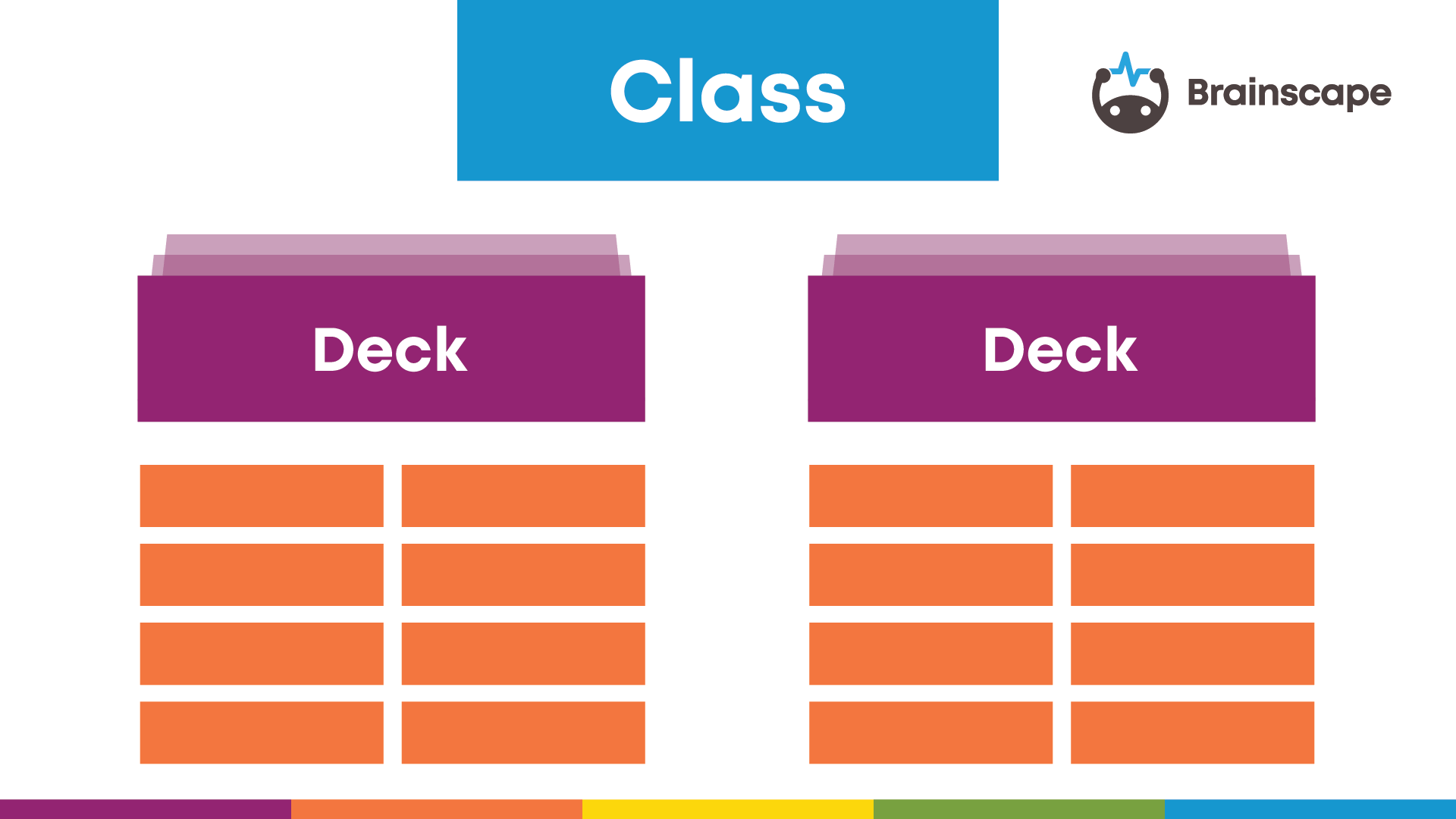
A subject is a broad category like "science" that represents a tag by which other users can search for it on the Brainscape marketplace (unless it is private).
A class typically conforms to either an exam (e.g. Series 63, WSET-2, etc.), a foreign language (e.g. Korean), or a subject at school (e.g. Anatomy 101). And in each class resides your decks of flashcards.
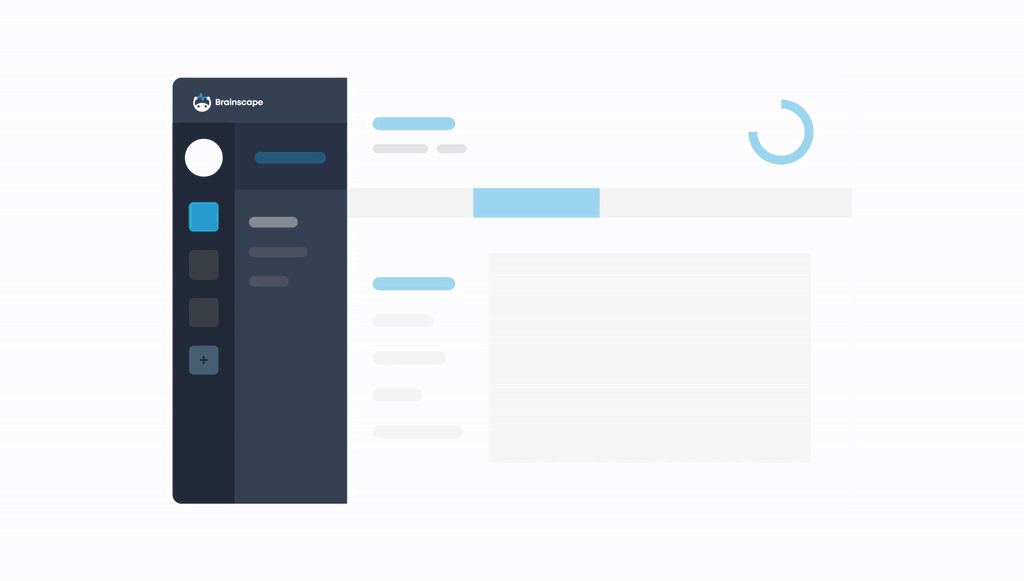
The process of organizing your topic into decks and cards is a key step in planning what you want to study. It may even be helpful to create and name all your decks before even adding any flashcards to any of them! This serves as a sort of outline that provides mental order so that you can more confidently fill in the gaps later with the actual cards.
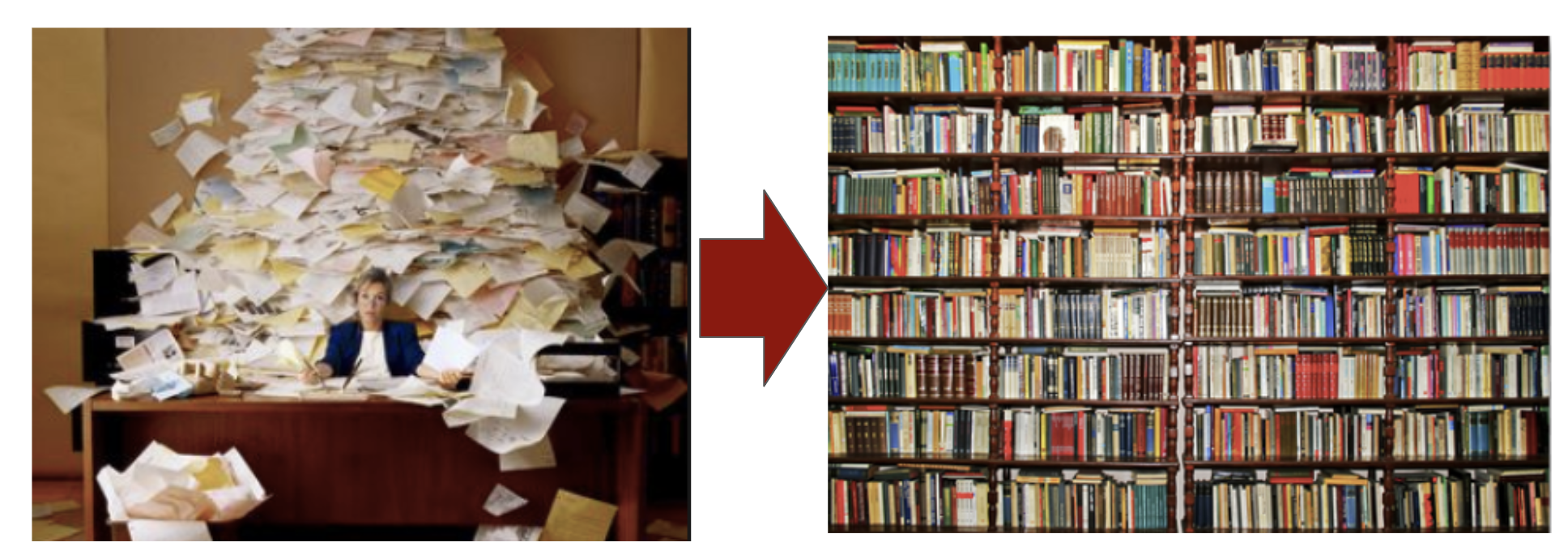
Finally, when it comes to ordering your cards within a deck, most users find it helpful to start with easier (or more foundational) concepts and progress toward more complex concepts. This theory of scaffolding is well supported by the learning sciences research on how to best build knowledge from the ground up.
4.2. Determining what is flashcard-worthy
When preparing for a test, it can feel tempting to make flashcards for every little fact and shred of information so that you don't miss it on the exam. But this is just impractical, particularly for knowledge-intensive subjects. You’ll end up with decks of thousands of cards!
Read through the information from beginning to end so that you have a 30,000-foot view of the chapter. Then, isolate the pertinent facts and turn these into question-and-answer flashcards. Also refer to old assignments, tests, and exams to see which aspects of the subject are typically assessed and, therefore, what is likely to show up on the exam you’re preparing for.
For example, do you really have to remember the exact date and town where Harry Truman was born? Or might it be more useful to record some bullets about the historical contexts surrounding his birth era that shaped him to grow into the man he became? Try to think how your instructor would think.
If you struggle to distill the subject down into a reasonable number of flashcards, it may be time to consider a different format after all. You could rather make a concept map or diagram and cover the labels with your hand to see if you can name each one from memory.
As effective as flashcards can be, use your best judgment as to whether the time spent making a flashcard could be better spent elsewhere.
4.3. Determining how much info to put on each flashcard
Experts say that the right amount of information to put on a flashcard is "the smallest piece of information that meets a particular learning objective." In other words, one learning objective per flashcard.
The challenge is that there are so many ways to chop up your learning objectives!
For example, one learning objective might be to recognize the top three most popular red wine varietals in the U.S. If that is the learning objective, then there is no reason for the flashcard to include any additional information other than the name of the three varietals. You can include those additional details on separate flashcards dedicated to each individual wine's characteristics.
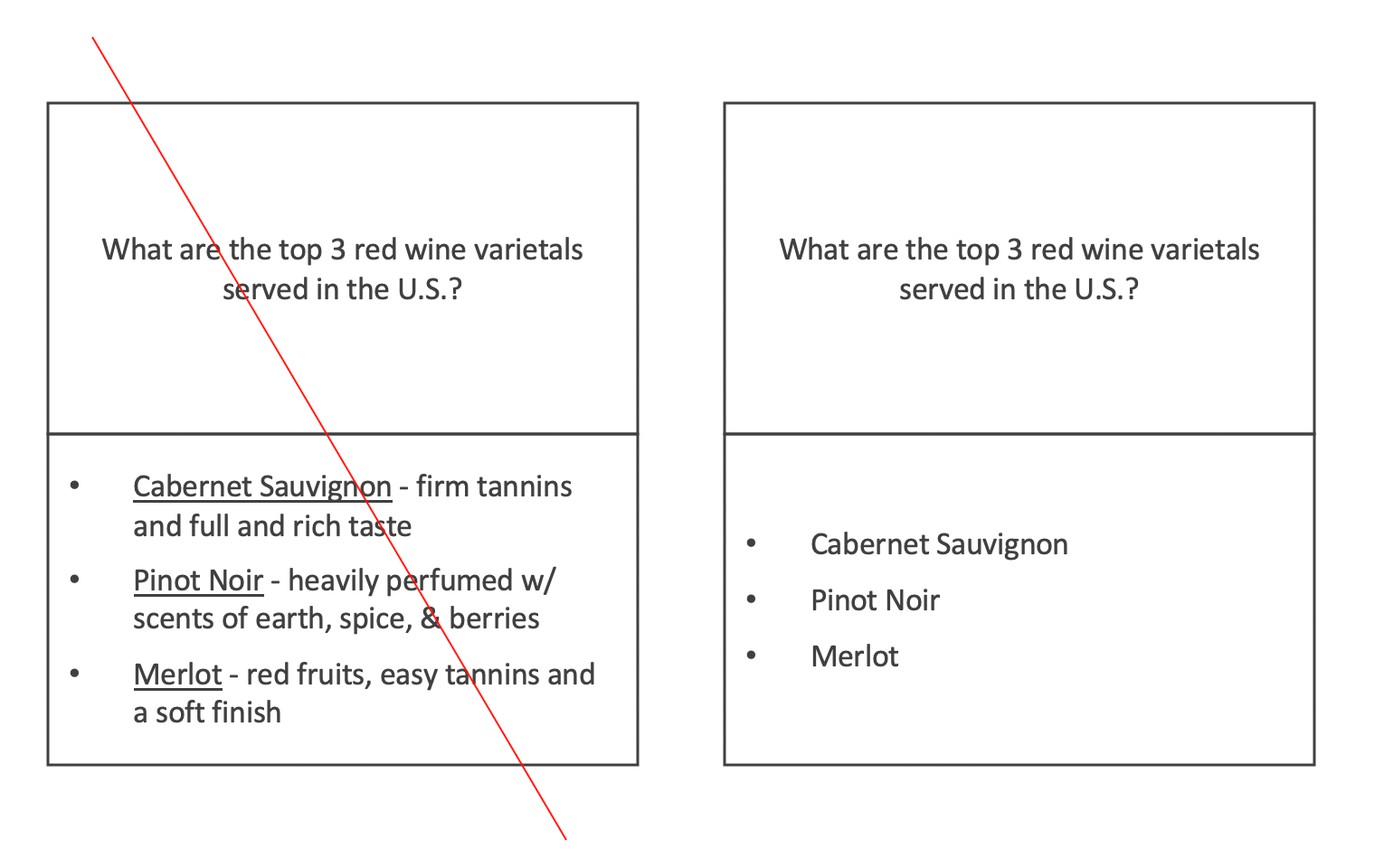
If you're using an online flashcards platform like Brainscape, you don’t need to cram a lot of information onto each card. It's not like you'd be wasting paper!
The better you are able to separate your individual learning objectives, the more granularly you will be able to rate your confidences and thus regulate your ongoing flashcard studies using spaced repetition.
That said, there may still be instances where you want to keep a lot of information on a single card, perhaps because you want to be able to remember it as one complete long answer to a potential interview or essay question. Or maybe your textbook contains a giant table, diagram, or animation that is so good and thorough that you can't imagine breaking it into smaller components.
In these cases, it may be helpful to just dump the long answer, or take a picture of that diagram from your textbook, and make one flashcard that tests you on all those sub-concepts at once. Or you can make a modified version of the image diagram with the labels covered up (to put on the “question” side of the digital flashcard) while leaving the completed version of the diagram for the “answer” side.
Because of all these nuances and the huge variation of lecture sizes and textbook chapter length, there is no way to determine the best number of flashcards in a deck. Sometimes, all it takes is 10 flashcards to cover all the information you need to know in a chapter; and other times, it’s more like 200.
Just try to keep any Brainscape flashcard deck to under 200 cards. At that point, it probably becomes more logical to start organizing your cards into smaller decks so that you (or your students) can at least work towards more frequent, achievable milestones.
Remember the progress principle: racking up small wins, more often is far better for motivation and memory!
4.4. Varying your flashcard format
Using a variety of flashcard formats keeps your brain more engaged while studying. Sure, vocabulary is a big one, but what about full questions and answers, bulleted lists, images, or even separating answers into a "main" answer with optional supplementary info below it?
If every flashcard looks the same or works your brain in the same way, then it's easy to accidentally start to "zone out" and fail to make genuine attempts at mentally retrieving each answer.
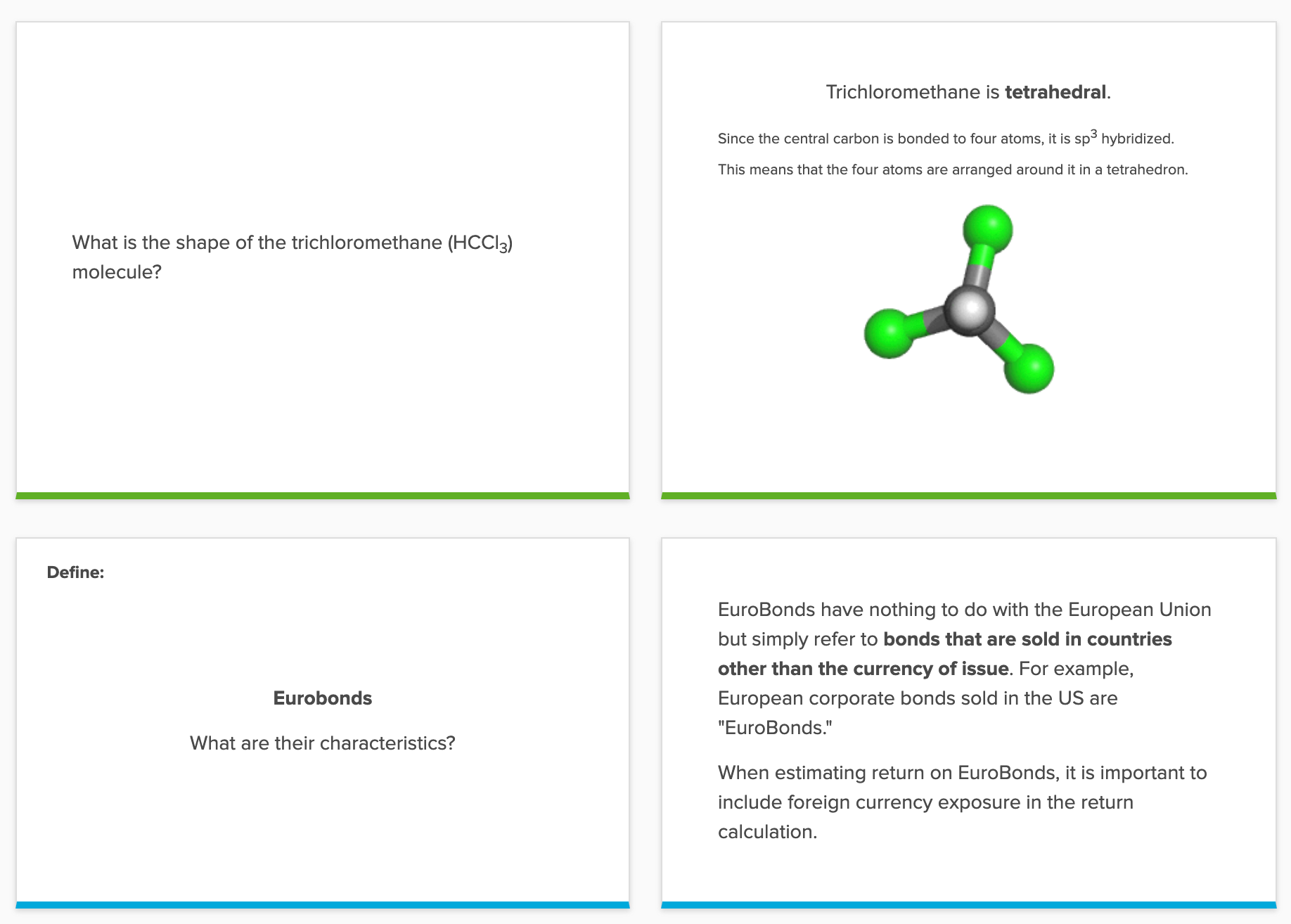
4.5. Making your flashcards memorable
A final ingredient to making great flashcards is to build them so that they trigger your visual and emotional memory.
Humans are hard-wired to remember pictures, stories, emotions, and visual cues far better than black-and-white words on paper or a screen. As such, our brain hangs onto facts better when there’s an emotion associated with the memory. That’s why you remember the childhood tragedy of your ice cream falling on the pavement, but not which year Edison invented the light bulb.
You can take advantage of these memory loopholes to make your flashcards stick in the mind like bugs to a fender.
To make memorable flashcards:
- Use emotive images in your cards. This creates strong hooks for your memory. The weirder or more embarrassing the imagery, the better.
- Add funny words or jokes for yourself (or your students).
- Combine words and images, rather than just using one or the other. This adds a layer of connection that will help you retrieve the memory later.You can use mnemonic devices as well, i.e. an image that ‘sounds like’ what you’re trying to remember.
For example, if you want to remember that the Napoleonic era came to an end with the battle of Waterloo, you might cook up the following image:
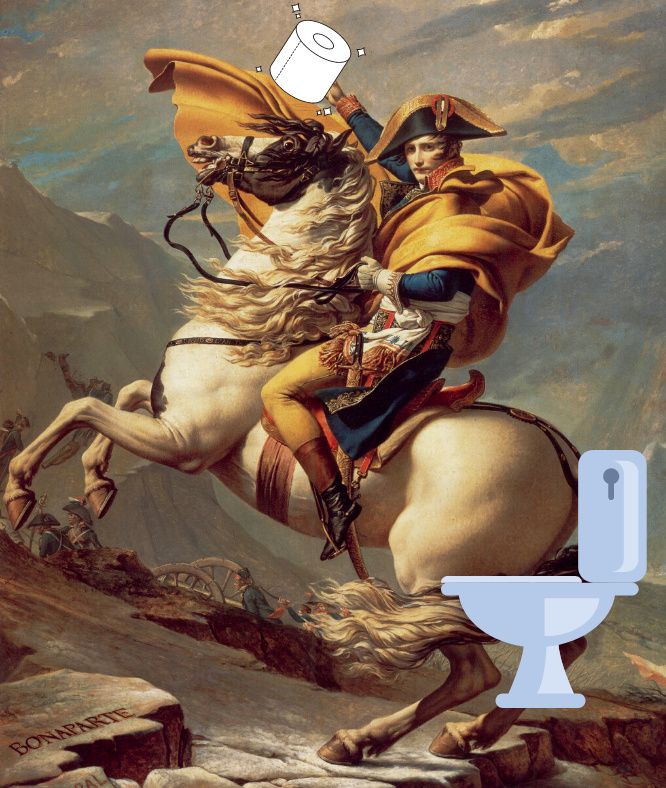
Just be careful to only use these when absolutely necessary. Mnemonic devices can be an inefficient way to spend time memorizing information, since they take extra time to create, both in your head and on paper. That time might be better spent just reviewing the raw flashcard a few more times.
4.6. Sharing your flashcards
As a final note on making flashcards, it's worth noting that there is also a huge benefit to sharing your flashcards with others. Whether you are the teacher simply bestowing the gift of premade flashcards onto your students, or whether you are a student sharing with your peers, making flashcards to share with others has many benefits:
- It motivates you to improve the cards' clarity and accuracy.
- It helps you delegate some of the authoring (if you make it collaborative).
- It gives a way to collect feedback from others to improve your flashcards.
- It helps other people learn more efficiently themselves!
If you happen to be using Brainscape to share your flashcards, then it's easy to invite others to your class, manage their editing permissions, and track their study progress with detailed learning analytics. You'll likely find all your students or peers to be more motivated to study than they've ever been before!

5. How to study with flashcards
Up until this point, we've discussed convenient ways to find and create flashcards. Now let's take a look at the best way to use flashcards to study.
5.1. Planning the logistics of flashcard study
First and foremost, the best way to study your flashcards really depends on what kind of flashcards they are (paper, online, or mobile). Let’s take a look at how you can optimize your studying with each...
5.1.1. Paper flashcards
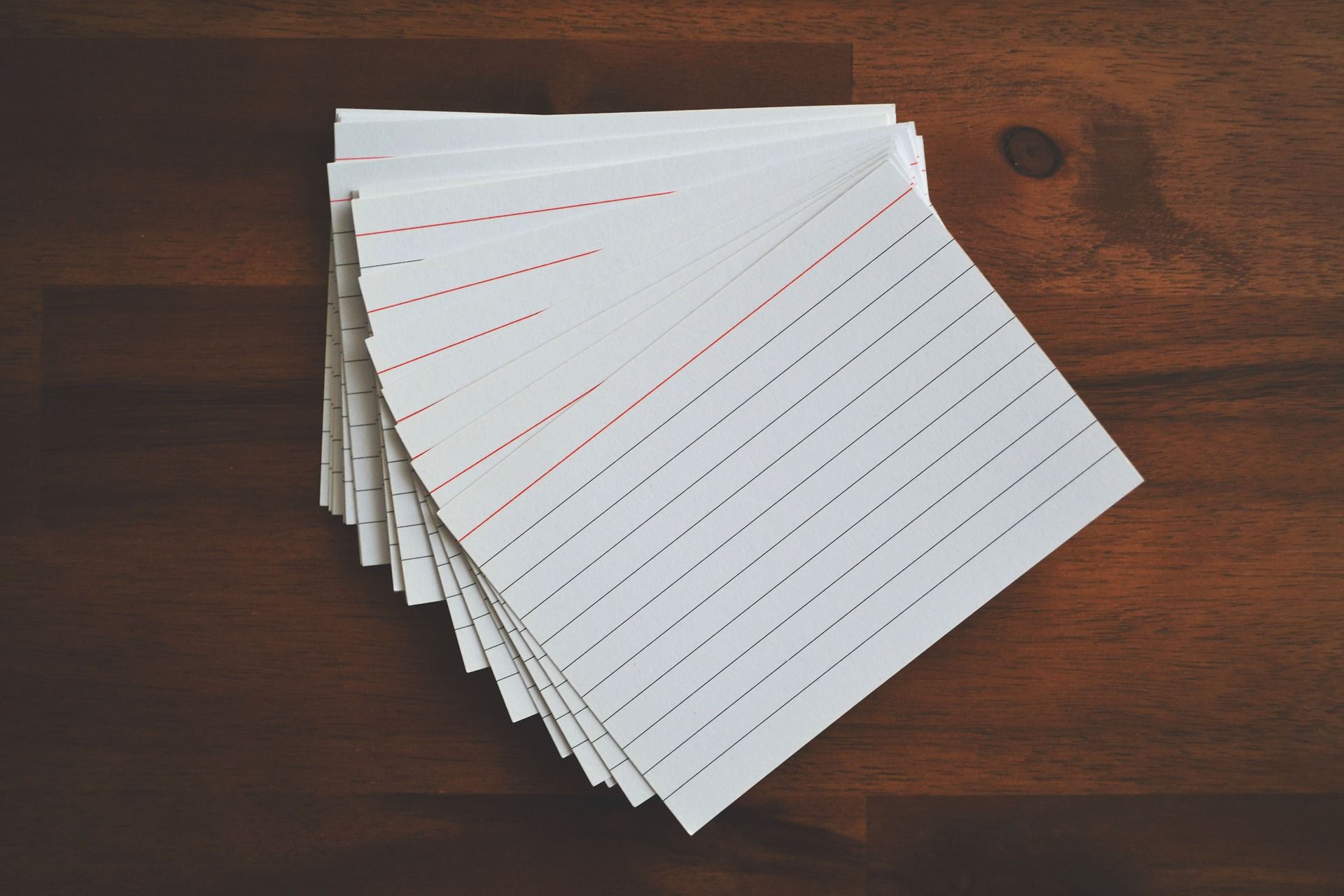
If you're working through a box of traditional flashcards, it can be a little tricky carrying them all around with you. So, it's typically easier to just grab a smaller stack of 20-50 cards to review whenever you have small breaks throughout the day.
When you get home at the end of the day, do one final review and then divide the cards into an "easy pile" and a "hard pile". (You can use more levels of confidence than that, if you like.) The cards in your "easy pile" can be left aside, while the ones in the "hard pile" can be incorporated into the next day's stack of flashcards.
5.1.2. Online flashcards
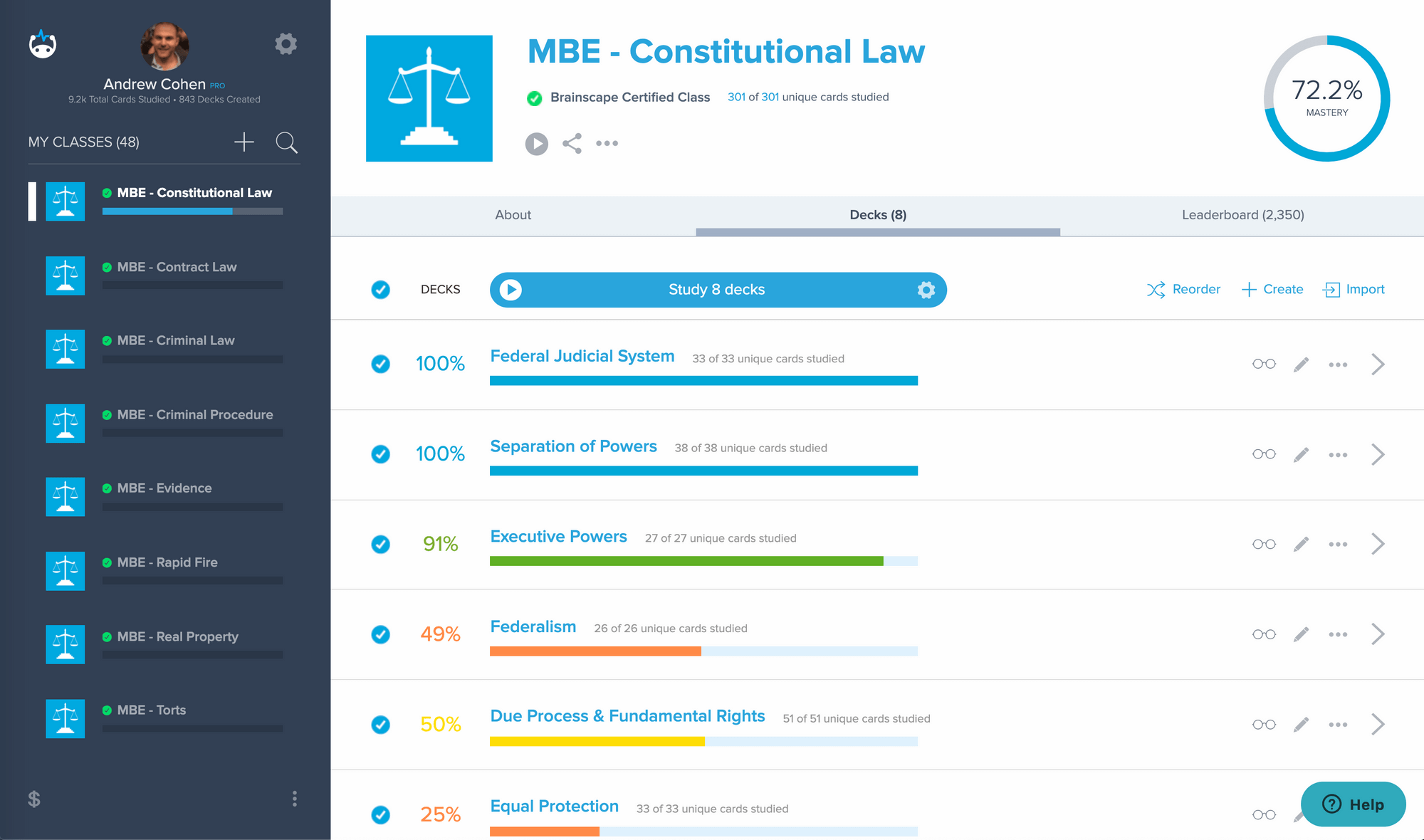
Using a web-based flashcards app can not only absolve you of having to choose a subset of cards to take with you every day. It can also decide for you which cards to review when you click the “Study” button (as long as your online flashcard app uses a well-implemented spaced repetition algorithm).
You just have to set aside a little study time whenever you’re sitting in front of your computer or laptop in order to make full use of the online interface. Even if you're working on other things (and may not feel like studying), you can set yourself a timer to knock out a quick 10-flashcard study round in Brainscape every 30 minutes (or however long works for you).
It may also be a good idea to add a browser shortcut to Brainscape as a primer to study a quick round whenever you open your computer.
5.1.3. Mobile flashcards app
Of course, if you had found or made your flashcards using Brainscape's website, then it might make sense for you to use the accompanying mobile flashcards app to keep all your content in sync!
Most users say that Brainscape is the best flashcards app because it has the most useful features and is the easiest to navigate. Keeping your Brainscape app on your phone's home screen will help prompt you to study in small sessions throughout your day so that you can make regular studying a habit.
Remember that spreading multiple, small study sessions over a longer period of time, is exponentially more effective than sitting down to a few long sessions right before your exam.
5.2. The single-deck run-through
Once you have determined the interface in which you'll be studying your flashcards most often, the next step is to get a high-level reminder of all the flashcards that you'll be reviewing. This is helpful even if you are the one who created the flashcards in the first place.
To do this with paper flashcards, you'd just quickly skim through the Question sides of the flashcards without even flipping them over. If you're using Brainscape, you can just click the “Preview” button on each deck one at a time and then visually scan the Question column from top to bottom.
The benefit of previewing each deck in Brainscape is not only to prime your brain for what's to come. It's also so that you can pre-rate your confidence in any flashcards that you absolutely know that you either don't need to study at all (5 - perfect confidence) or that you are totally clueless about and need to review ASAP (1 - no confidence). This can be done by just clicking one of the confidence buttons beside the respective flashcard.
After a quick preview and/or pre-rating session, you can then dive into that Brainscape deck for an actual study session, rating each flashcard one-at-a-time and reaping the benefits of a system of continued, intelligent spaced repetition.
Just don't necessarily feel like you need to rate a "5" on every card in your single-deck study session (unless you are perfectly confident). Maybe just shoot for 30-60% mastery at first, improving on your scoring slowly but surely. It's much better to march toward your 100% mastery goal in successive study sessions than to try perfect it all at once.
5.3. Mixing it up
In real life, the world does not neatly serve you questions and challenges in the same way, over and over again. Things get thrown at you at random and you need to be able to retrieve the question quickly and efficiently from memory.
For example, let’s say you meet a French person and you want to ask them (in French) what part of France they're from. You won't have time to mentally scroll through your French flashcards until you get to Deck 4, card 17 to retrieve the phrase in your head!
You need to learn how to think on your toes.
This is why it's most effective to mix up your flashcards as soon as you have reached a decent level of confidence in each of the constituent decks. You can do this either by shuffling your paper flashcards together or—in Brainscape—by selecting the decks you want and clicking the giant “Study” button. This will generate a spaced repetition session across all the decks you have selected. Quick, easy, and convenient!
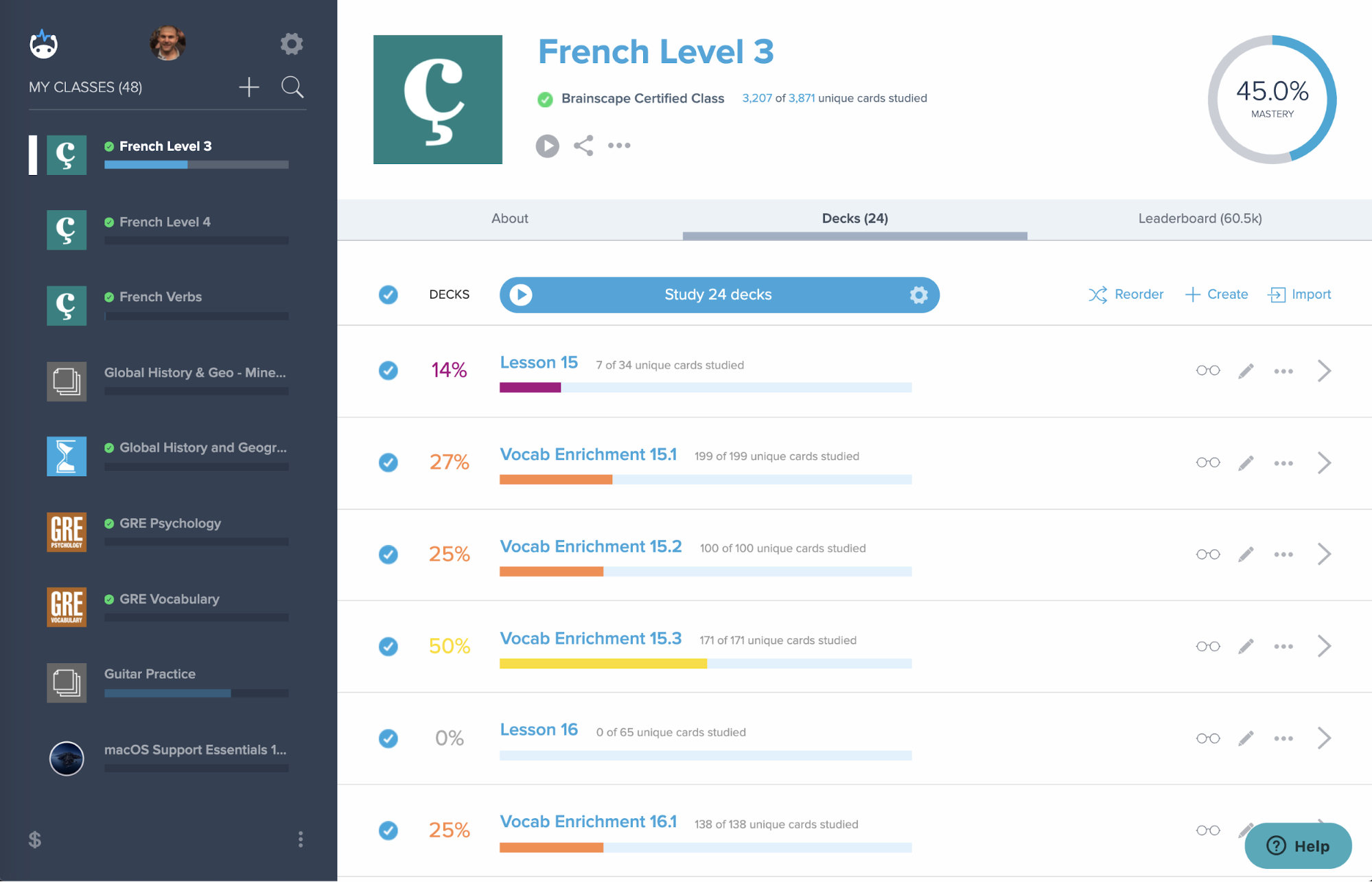
To make things even more interesting, Brainscape's study mixes offer you two modes:
- A random mix chooses a 10-card round from all the selected decks in the class, even if you haven't even seen those cards yet.
- A progressive mix moves through the decks in order but will still review cards from previous decks. In other words, once you've seen all the cards in Deck 1, you will start seeing cards from Deck 2, but the cards in Deck 1 will continue to show up occasionally based on their appropriate spaced repetition interval.
Once you've at least seen all the flashcards in all the decks (i.e. once you've rated your confidence in each card), then the random and progressive mix modes work identically.
Whatever the method, the act of randomizing the content will force your brain to establish independent neural pathways to that information (rather than recognizing patterns) and this will help you memorize and recall the information more effectively.
5.4. Tracking your learning journey
Another tip for studying your flashcards effectively is to obsessively keep track of your mastery so you can calibrate your ongoing studies.
For example, if you're using paper flashcards, you might continue re-classifying your cards into an easy, medium, and hard pile, and allocate your studying accordingly (for a sort of manual form of spaced repetition). The continued movement of your flashcards from the hard and medium piles toward the easy (mastered) pile could be a visual form of progress tracking.
If you're using Brainscape's spaced repetition system, the aggregation of all your confidence ratings not only generates an average percent mastery across all your decks and classes, it also gives Brainscape the information it needs to calculate how much total remaining study time is required for you to reach 100% mastery.
This is incredibly useful in helping you plan and use the time you have before your exam efficiently.
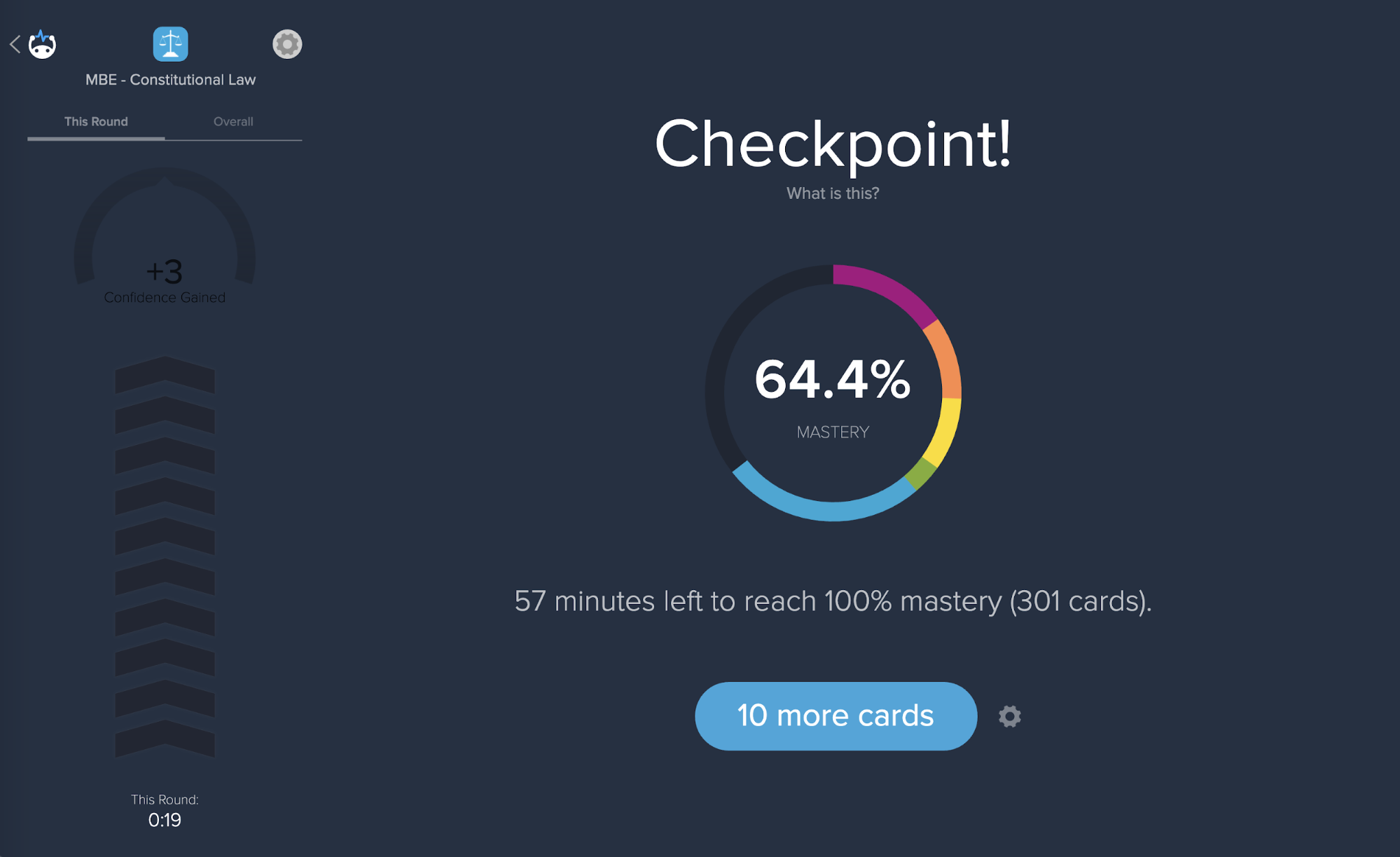
5.5. Marching toward mastery
Finally, as you begin to approach 100% mastery of your flashcards—which are a form of cued recall (the question cues your memory)—you can then start to test yourself using more aggressive techniques like free recall. Free recall is the act of remembering everything you can about a certain topic from scratch and without a question prompting your answer.
For example, if I asked you to tell me the story of your first kiss, you'd likely be able to speak for several minutes without me having to ask you specific questions like where you were and what it was like.
Forcing yourself to recite everything you can about a topic is one of the most effective ways to solidify it in your brain—especially if you simplify it in the process. This is a tactic known as the Feynman Technique, and it’s a great exercise to practice in the shower, on a walk, or any other time you don't have your study materials in front of you.
Many people find it helpful to pretend that they are teaching the concept to a child or to a clueless peer, in order to help them "dumb it down" as much as possible. You can also enlist the help of an actual human, although it might be a little tough to find someone willing to listen to you talk about intellectual property law for 3 hours!
6. Becoming a flashcard master
You’ve made it this far, which means you are serious about becoming a flashcard master and using this age-old technique to help you learn efficiently for your upcoming exam. And so, to end off, here's a quick summary of our tips for how to study with flashcards effectively:
- Confirm that flashcards are the best tool for your studying need.
- Search for your subject on the Brainscape knowledge genome. If it's not there (in its entirety), you can pick and choose from multiple other users' classes, or just make your own flashcards using the best practices we discussed.
- Study as often as you can, in small chunks. The Brainscape mobile app is particularly helpful for incorporating short study sessions throughout your busy day.
- Track your progress and pace yourself using Brainscape's "remaining study time left" estimate and percentage mastery gauge.
- When you approach 100% mastery in Brainscape, try to use free recall by explaining everything you remember about the topic to an imaginary friend or student. This will really consolidate that information in your memory.
Millions of the world's top students have already followed these tips to earn better grades and higher scores on their exams and professional certifications.
Now YOU know how to be one of them, too … filling the lake one kettle at a time.
Sources
Amabile, T., & Kramer, S. (2011). The progress principle: Using small wins to ignite joy, engagement, and creativity at work. Harvard Business Press.
Ericsson, K. A., Krampe, R. T., & Tesch-Römer, C. (1993). The role of deliberate practice in the acquisition of expert performance. Psychological Review, 100(3), 363-406.
Hogan, K. E., & Pressley, M. E. (1997). Scaffolding student learning: Instructional approaches and issues. Brookline Books.
